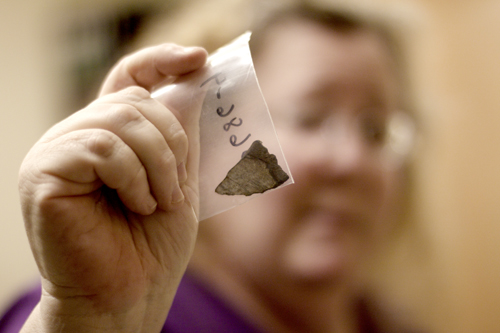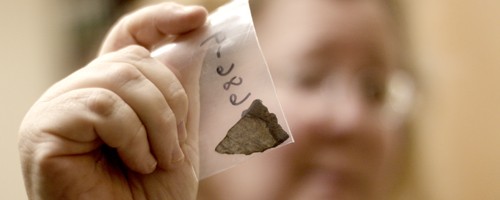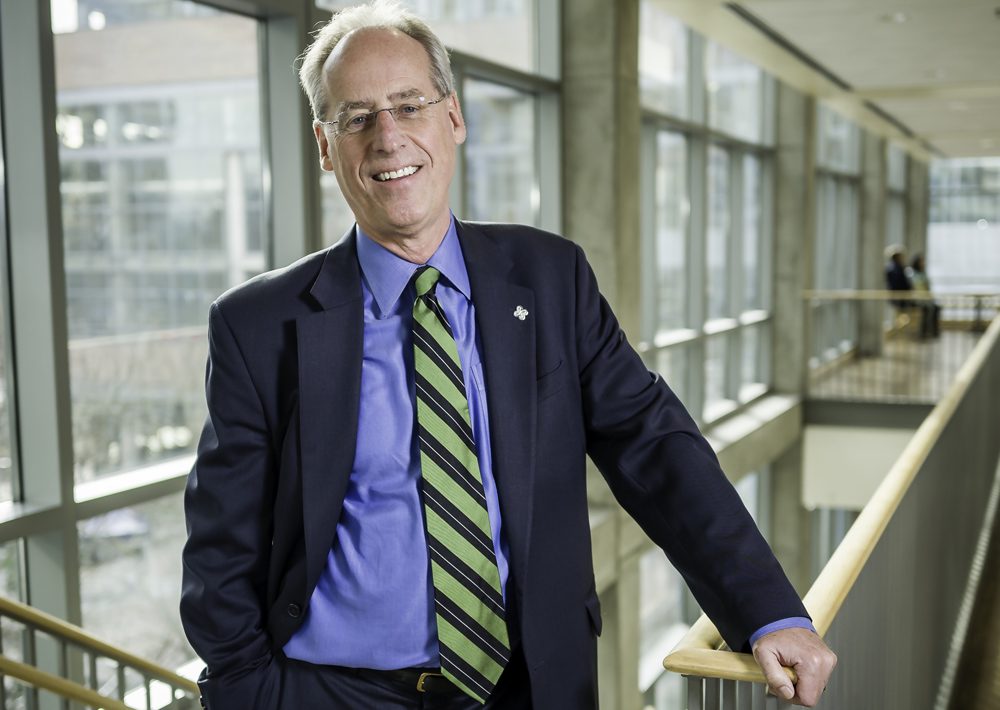In the basement of Cramer Hall lie hundreds of pieces of our solar system.
PSU’s public meteorite lab
In the basement of Cramer Hall lie hundreds of pieces of our solar system.
In 2003, Melinda Hutson, Alex Ruzicka and Dick Pugh sat at dinner with a bottle of wine talking about how cool it would be to have a meteorite lab. This is when Hutson asked the question: “Why don’t we?”

And so the Cascadia Meteorite Lab was born.
Pugh, who is now the lab’s outreach coordinator, began working at Portland State in 1958. That year he became the lab assistant for Allan Lang, then known as Oregon’s “meteorite guy.”
Lang chased down meteorite leads and became the authority on any potential “meteorite” that walked through the door in the public’s hands.
“When [Lang] retired, he gave me one or two meteorites, all his books and papers and said, ‘it’s all yours,’ and I’ve been doing it ever since,” Pugh said.
In the beginning, all they had was Lang’s meteorite. Now, nine years later, the Cascadia Meteorite Lab has between 600 and 700 meteorites. They come from the moon, Mars and even asteroids.
The lab has two rooms: the collection room, where most of the meteorites and samples are held, and the work room, where microscopes are set up to do initial research on the samples.
In addition to Pugh, the lab boasts Ruzicka as the director and Hutson as the curator. Students also come and go, with three graduate students and a couple of undergraduates now working with Ruzicka.
“Everybody, from the faculty to the students who work with them, has the opportunity to make a real contribution,” said Christina Hulbe, chair of the geology department. This includes undergraduates and graduate students, she continued.
“I think that makes it a unique opportunity for students here to do something that’s kind of out of the ordinary and really about fundamental science and how the universe works,” Hulbe said.
The collection grew in many different ways. Pugh is always going out to find new leads, many people donate samples and a lot of people hope to get their meteorite classified.
Aside from their high numbers, the samples in the lab vary widely, including several that have never been examined elsewhere, Ruzicka said.
“They are what are called ‘unclassified samples.’ It’s exciting because you can cut open a rock and you’re the first person to actually look at what’s inside,” he said.
These unclassified meteorites are great projects for students because, no matter what, they are doing something new, Ruzicka explained. He said that about half of the samples they have are like these.
Hutson said that about 30 or 40 meteorite samples have been brought in by people who have had them for years. She told a story about one woman who came in to see if the rock she had was truly a meteorite. It had been in her family for years, ever since her grandfather claimed he saw a fireball hit the plains of Kentucky and went out to get pieces of it.
Not knowing if this story was true, the woman was hesitant to find out—but after bringing the rocks to the lab, she found out the truth. The pieces she had were not only meteorites, but were from two completely different asteroids. And neither of them was the one that her grandfather had seen.
The members of the Cascadia Meteorite Lab stressed that each individual meteorite can provide new information and that no two meteorites are alike.
“They’re pieces of other places, like asteroids or planets, and some come from comets,” Pugh said.
“They tell us about the origin of the solar system, they tell us about the origin of other planets, and I think they are the most interesting rock there is.”




